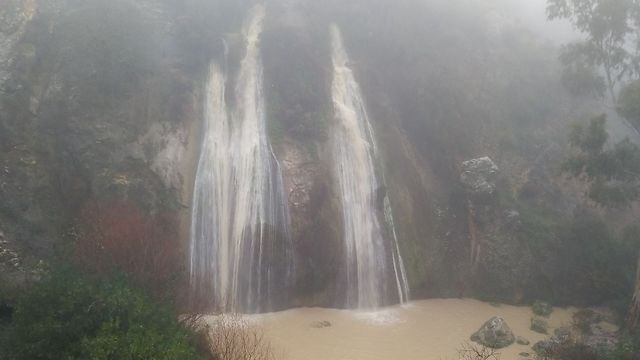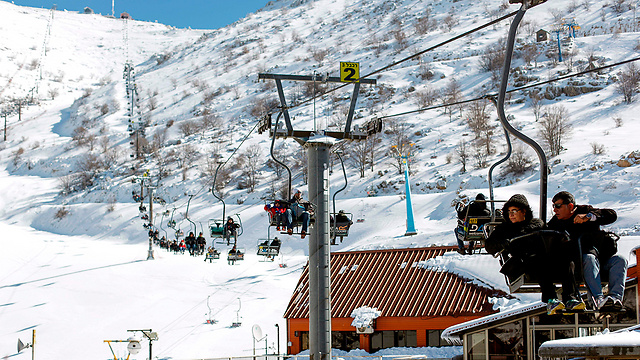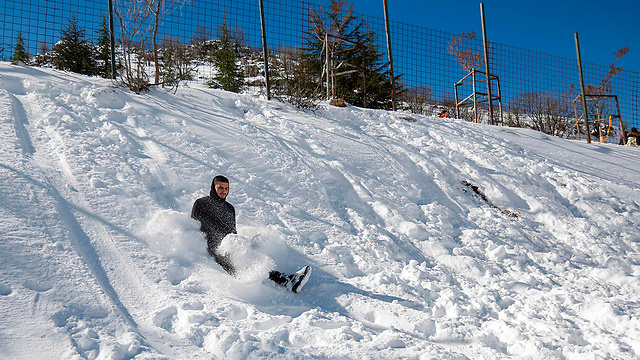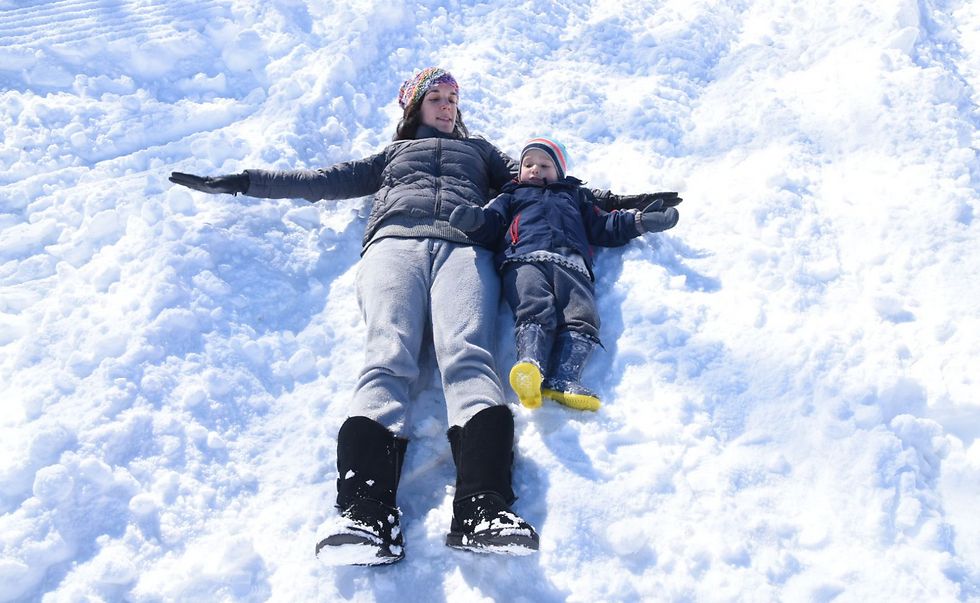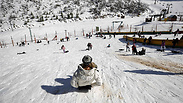
Mount Hermon
צילום: AFP
Northern Israel painted white with heavy snowfall
Travelers from across the country flood Israel's national parks after heavy rainfall, snowfall turn its streams into a sight to behold, cover Mount Hermon with brilliant snow.
Saturday's comfortable weather drew many to Israel's various nature reserves on Saturday, after Friday's storm filled streams to the brim and blanketed Mount Hermon in white.
Hundreds arrived in the north to observe impressive water flows in the Banias and Nahal Ayun. Others chose to visit the KKL-JNF Hula Lake to watch tens of thousands of cranes perched on the snowy peaks of Mount Hermon. The water also flooded the streams in the south of the country, and many reached Nahal Arugot to see it at its liveliest.
In the center of the country, one of the most prominent attractions was the Yarkon National Park, which opened after being closed to visitors due to the weather. The Israel Nature and Parks Authority gave tours in the muddy area, which included information on the area's fauna and flora, and the history of the Yarkon. Around 3,200 visitors visited the site.
In total, some 60,000 visitors visited nature reserves and national parks throughout the country, most of them concentrated at the Qasr al-Yahud baptism site in the Jordan River (7,500 visitors), the Caesarea National Park (2,500 visitors), the Banias Reserve (2,100 visitors), Ein Afek (1,200 visitors), Qumran (1,100) and Ein Hamad (1,000 visitors).
The country's major attraction, though, was Mount Hermon, with around 8,500 travelers arriving to enjoy the snow, whose height on the lower slopes of the mount reached 20 cm. The fact that access to the site is no longer free of charge did not deter them from waiting in long queues uphill from Majdal Shams to the site's cash registers.
In the past few weeks, meteorological services reported that Israel is entering its fifth dry year in a row, but the January figures brought about a slight change in trend.
According to Meteo-Tech Meteorological Services, the level of precipitation in the entire country reached 90-110 percent of the average. In areas such as Be'er Sheva and Arad the precipitation reached 120 percent of the multi-annual average for this period.
Meteo-Tech now estimates that rainfall in February will be average, and may increase markedly in March.
They added that while figures are on an upward trend, there is still a great shortage of water in the Sea of Galilee and the water reservoirs for agriculture and the aquifers, where the deficit created in four years of drought is still substantial.










